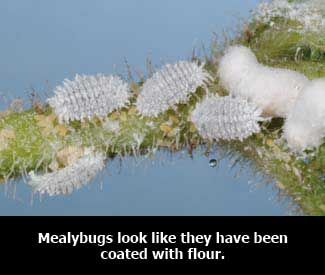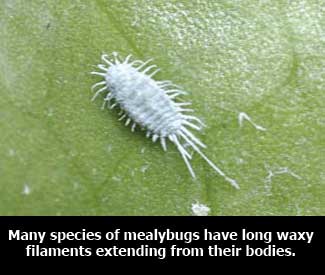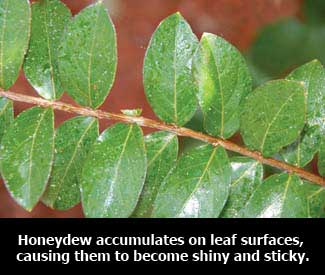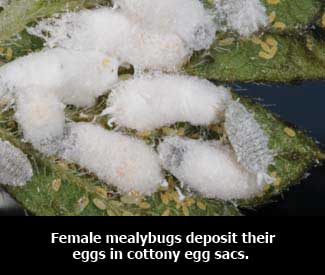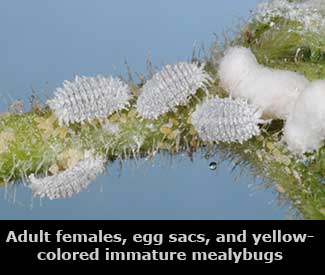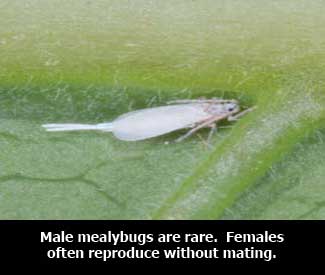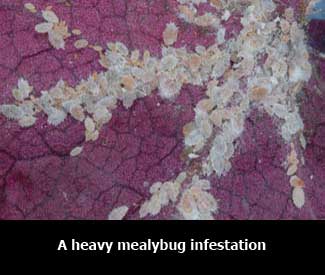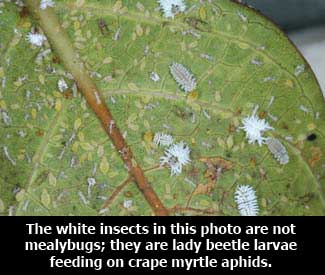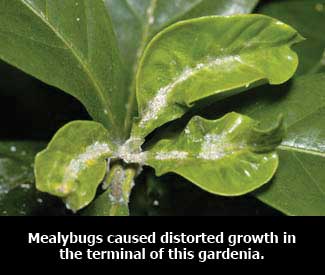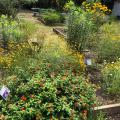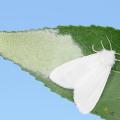Mealybugs
Mealybugs have oval-shaped, flattened bodies that are covered with white powdery material. Some species have elongate waxy filaments extending from the margins of their bodies. Like soft scales, aphids, and whiteflies, mealybugs have piercing-sucking mouthparts and produce honeydew, which supports the growth of sooty mold fungi. Female mealybugs remain wingless throughout their life, eventually producing cottony egg sacs containing hundreds of eggs. Eggs hatch into small nymphs that somewhat resemble adult females, but may differ in color. Male mealybugs are winged, but are rarely seen. Mealybugs can build to high populations and cause damage by removing plant sap, producing honeydew and sooty mold, and causing distorted plant growth. Mealybugs are more common in greenhouses and indoor settings, but outbreaks occasionally occur on outdoor plants. Gardeners should be aware that the larvae of some species of beneficial lady beetles superficially resemble mealybugs.
Control Mealybugs: For fast-acting control of mealybug infestations, spray with a product that contains acetamiprid (Ortho Flower, Fruit, and Vegetable Insect Killer); this is one of the more effective foliar spray treatments for mealybugs. Sprays of horticultural oil or neem oil will also control mealybugs, but only with thorough spray coverage. Soil-applied systemic treatments with products that contain dinotefuran (Zylam or Safari) are slower-acting but will provide longer-lasting control.
See Insect Pests of ornamental plants in the home landscape, page 6 and pages 39-41 for more information on mealybugs.
Publications
News
A grant from Coast Electric will allow for a renovation of the Mississippi State University Crosby Arboretum’s pollinator garden. Pat Drackett, director of the arboretum, said the pollinator garden was established in 2001 as the Explorers’ Garden. It is a 3,000-square-foot space with a variety of native and other plants that helps teach visitors how to create havens for pollinators.
The 2020 Fall Flower & Garden Fest will be a virtual, educational event this year.
A tent for camping in the woods can be a good thing, but a tent filled with caterpillars in a pecan tree can be bad news for homeowners.

